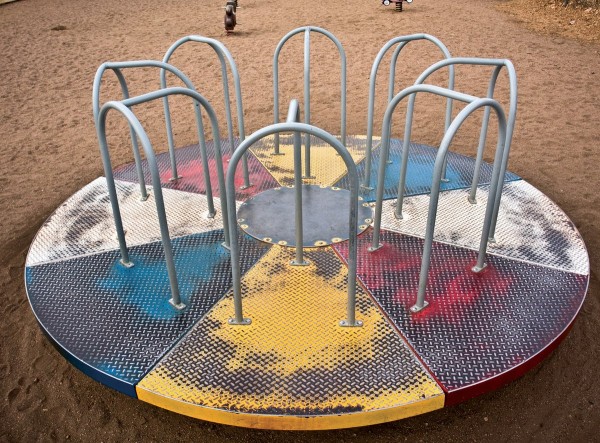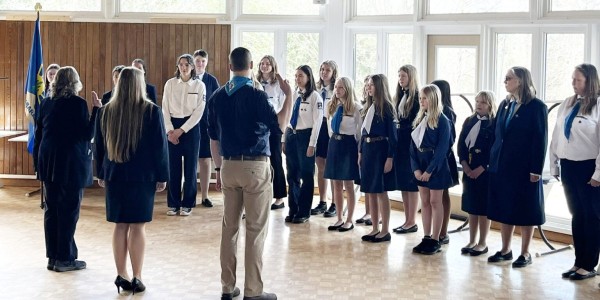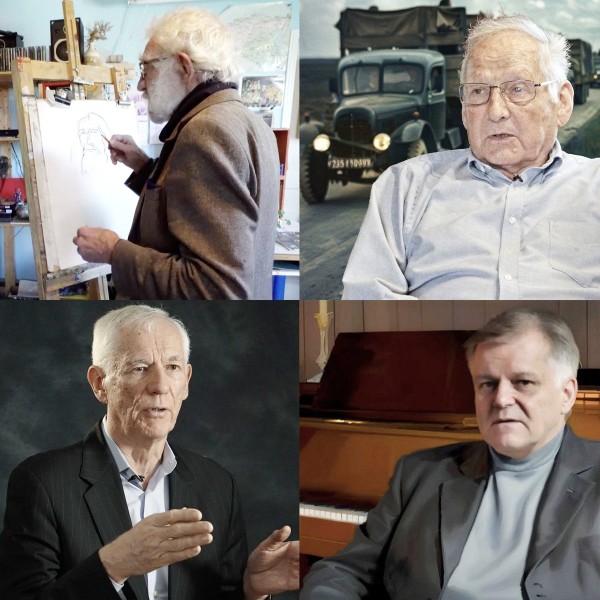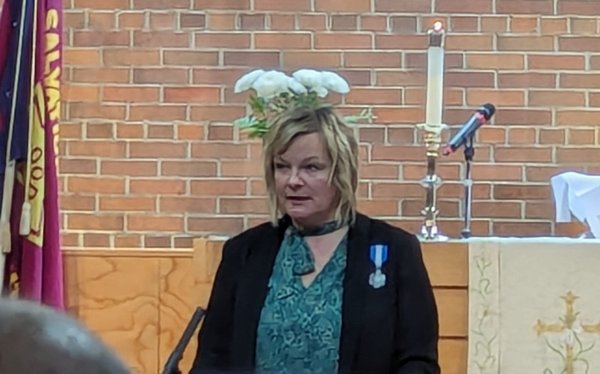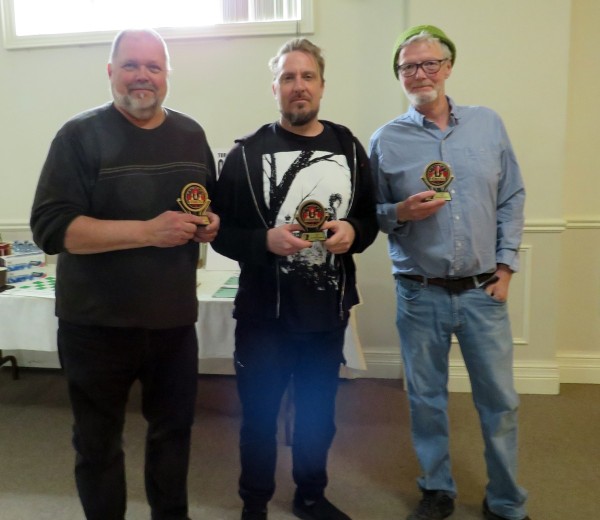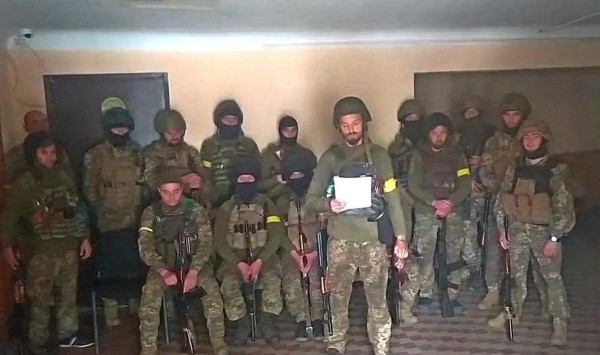Markus Alliksaar
Last April, the Madison Ave group conducted a series of community consultation meetings regarding the proposed new Estonian Center. At one of these meetings (Mar 28), I stated that parking is the project’s Achilles heel. For this reason, I asked for a comprehensive parking study to analyze the problem and to develop solutions that could be debated by the community. The meeting facilitators promised to conduct a parking study and deliver it to the community by fall of 2018. This promise was reiterated when I asked a follow-up question at last year’s Eesti Maja AGM.
Unfortunately, to date, no parking study has been presented to the public. Also, nobody seems to have been consulted about their parking needs. This includes the Toronto Eesti Selts of which I am now a director, and which organizes the Vabariigi Aastapäeva Aktus every year. At a recent community engagement meeting (March 14), I was told by the meeting facilitators that a parking study has been conducted. When asked for its conclusions, I was told that they didn’t have it handy for reference. They told me that I could approach the Madison Ave project manager for it, but several e-mail requests for the study have yielded no response to date.
I also asked about a letter from the City Manager of Development Engineering Avi Bachar dated Dec 14 that turned down the Madison Ave group’s request for a zoning variance that would reduce the number of parking spots slated for this site from 19 to zero. According to this letter, a parking study was submitted with this application, which analyzed parking patterns at the current Eesti Maja. According to the letter, this study had observed in their study period that the peak number of occupied parking spots at 958 Broadview Ave. was 12. Anybody who has any familiarity with the Eesti Maja knows that this conclusion is absurd. The Eesti Maja’s 72-space parking lot is overflowing several nights every week. The meeting facilitators told me that an amended study was submitted to the City, which had satisfied them. When asked what modifications were made to the resubmitted study, they said that they did not have that information readily available.
One of the presenters opined that in thinking about transportation in terms of private vehicles, I was using outdated concepts. He said that the future of transportation in Toronto is with public transportation. Later on, I pondered all of the brand-new subdivisions being built in Pickering, Ajax, Aurora, Newmarket, King City, and every other bedroom community in the GTA. These are built exactly like 1950’s homes (except on smaller lots) for people whose primary mode of transportation will be their car. This new construction means that the private automobile will be an important factor in the GTA transportation equation for the next three or four decades.
There has been much talk about the so-called Uber generation, that is young people who choose to live in the city and eschew car ownership entirely. There is some truth to this trend but it is not the whole truth. It has been exaggerated, as urban geographer Joel Kotkin has tirelessly documented. Many young families want a house with a backyard to raise their kids. They are not going to get that in the City of Toronto where house prices are exorbitant. They must move out to the aforementioned suburbs. For these families, the additional strain of a subway ride on top of a long commute may be too much. For them, an Eesti Maja with no realistic parking will cut them off entirely from our community. Our community is too small to write these Estonians off.
Given that commuting by car will be a reality for the foreseeable future, we urgently need a parking study that includes the following items:
1. A canvas of all potential user groups to assess the parking requirements of the functions they organize. For instance, how much parking does the Vabariigi Aastapäeva Aktus require?
2. A catalogue of potential routes to the Madison Center with their related traffic issues.
3. An inventory of nearby parking, with their cost and distance from the Center. Of particular concern is the parking lot on Spadina north of Bloor. This provides much of the area’s paid parking but it looks ripe for redevelopment. Have we secured a promise from the City that it will remain? Have we considered leasing space from neighbouring parking lots for seniors and people with accessibility needs?
We need answers to these questions in order to be able to properly assess the parking situation on Madison Ave, but currently we are debating in a vacuum.
Kus on Madison Ave parkimislahenduse projekt?
Möödunud aasta aprillis korraldas Madison Ave grupp seeria kogukonna konsultatsioone seoses kavandatava uue Eesti Keskusega. Ühel nendest koosolekutest (28. märtsil) tõin ma esile, et parkimine saab olema selle projekti nõrgimaks lüliks. Arvestades seda, palusin ma läbi viia põhjaliku parkimisolukorra uuringu, et seda probleemi analüüsida, lahendada ja arutada kogukonna poolt. Koosoleku korraldajad lubasid selle uuringu läbi viia ja informeerida kogukonda hiljemalt 2018 aasta sügiseks. See lubadus sai uuesti üle korratud, kui ma küsisin vastava küsimuse Eesti Maja eelmise aasta aastakoosolekul. Kahjuks ei ole tänaseni seda parkimislahenduse uuringut avalikkusele esitatud. Samuti ei paista, nagu oleks kellegi käest küsitud nende parkimisvajaduste kohta. Muuhulgas ei ole seda küsitud ka Toronto Eesti Seltsi käest, mille juhatusse ma nüüd kuulun ja mis korraldab iga-aastast Eesti Vabariigi aastapäeva aktust. Hiljutisel kogukonna koosolekul (14. märtsil) öeldi mulle korraldajate poolt, et parkimisuuring on tehtud. Kui ma küsisin tulemuste kohta, siis vastati, et neil ei ole seda parajasti käepärast. Mulle öeldi, et ma võin seda küsida Madison Ave projektijuhi käest, aga ma ei ole oma mitmetele e-posti kirjadele senini vastust saanud. Ma samuti küsisin linna arendusinseneride juhi Avi Bachari kirja kohta, saadetud 14. detsembril 2018, mis lükkas tagasi Madisoni Ave grupi taotluse ehitusreeglite erandiks, mis oleks vähendanud parkimiskohtade arvu 19 pealt nullini. Vastavalt sellele kirjale, parkimisuuring oli esitatud koos avaldusega, sisaldades muuhulgas andmeid parkimise kohta praeguses Eesti Majas. Vastavalt sellele kirjale, tehtud uuring leidis, et 958 Broadview parkimisplatsil pargib uuringuperioodil korraga maksimaalselt 12 autot. See järeldus on absurdne igaühele, kellel on vähematki tegemist praeguse Eesti Majaga. Eesti Maja parkimisplats on pilgeni täis mitmel õhtul igal nädalal. Koosoleku korraldajad ütlesid mulle, et muudetud parkimisuuring on linnale esitatud ja see on rahuldavalt vastu võetud. Kui ma küsisin, mis muudatused olid tehtud selles uuestiesitatud uuringus, siis öeldi mulle, et see informatsioon ei ole kergesti saadaval. Üks ettekandjatest avaldas arvamust, et käsitledes erasõidukite parkimist, kasutan ma aegunud kontseptsiooni. Ta väitis, et transpordi tulevik Torontos on ühistransport. Hiljem ma mõtisklesin kõigi nende uute elamupiirkondade üle, mida ehitatakse Pickeringis, Ajaxis, Auroras, Newmarketis, King City’s ja igal pool mujal GTA magalarajoonides. Neid ehitatakse täpselt nagu 50-ndatel (kuigi väiksematele maalappidele) inimeste jaoks, kelle põhiline transpordivahend on isiklik auto. Kõik see uus ehitamine tähendab, et isiklik auto on jätkuvalt oluline faktor GTA transpordilahenduses järgmise kolme või nelja aastakümnendi vältel. Viimasel ajal on palju räägitud nn. Uberi generatsioonist, s.t. noortest, kes on teinud valiku elada linnas ilma isikliku autota. See trend teatud ulatuses tõepoolest toimub, kuid see ei ole siiski valdav. See trend on suuremaks tehtud, kui see tegelikult on, tasub vaadata ainult linnastumise uurija Joel Kotkini publikatsioone selles vallas. Paljud noored perekonnad tahavad eramaja koos tagaaiaga, eriti lastekasvatamise perioodil. Nad ei ole seda võimelised tegema Toronto linnas, kus kinnisvara hinnad on kerkinud hirmkõrgeks. Nad on sunnitud kolima eespool nimetatud linna ümbritsevatesse elamurajoonidesse. Nendele perekondadele on metrooga sõit kesklinna lisaks pikale autosõidule suuremaks ettevõtmiseks, mis on kokku lihtsalt liiga palju. Eesti Maja ilma reaalse parkimisvõimaluseta eemaldab nad meie kogukonnast täielikult. Meie kogukond on juba praegu liiga väike, et seda lubada. Kuna autosõit ei kao lähitulevikus kuhugi, on meil hädasti vaja parkimisuuringut, mis sisaldab järgnevaid punkte:
1. Kasutajagruppide küsitlus, mis tuvastab parkimisvajadused nende ürituste tarbeks. Näiteks, kui palju parkimiskohtasid vajab Eesti Vabariigi aastapäeva aktus? 2. Loend võimalikest marsruutidest Eesti Keskusesse koos nendega seotud probleemidega. 3. Nimekiri lähedal asuvatest parkimisvõimalustest, koos hinna ja kaugusega Keskusest. Eriliseks mureks on parkimisplats Spadinal, Bloorist põhjapoole. See parkimisplats pakub enamuse selle piirkonna parkimisvõimalustest, kuid näeb küps uueks kõrghooneks. Kas linnavalitsus on lubanud meile, et see jääb? Kas me oleme mõelnud, et üürida parkimiskohti lähedalasuvatest parklatest pensionäride ja puuetega isikute tarbeks?
Et korralikult hinnata parkimisprobleeme Madison Avenüül, on meil vaja vastuseid nendele küsimustele, muidu me arutame seda vaakumis.
Markus Alliksaar

In search of a Madison Ave parking study Estonian Life ENG, EST (5)
Eestlased Kanadas | 18 Apr 2019 | EL (Estonian Life)Eesti Elu
Viimased kommentaarid
Kommentaarid on kirjutatud EWR lugejate poolt. Nende sisu ei pruugi ühtida EWR toimetuse seisukohtadega.
to: To FM
What are you suggesting free parking for 60 spaces within steps of the EC?
What are you suggesting free parking for 60 spaces within steps of the EC?
"It would seem that you have never taken an individual to the EM at anytime that has mobility issues. Otherwise you would understand my original statements. "
????
I am not talking about the existing old building. If the old house is going to go the way of the trash heap, why are you fixated on the crappy condition of the existing house?
Please focus on the needs of the community, including seniors, for the new centre on Madison. Anything else is a waste of time.
????
I am not talking about the existing old building. If the old house is going to go the way of the trash heap, why are you fixated on the crappy condition of the existing house?
Please focus on the needs of the community, including seniors, for the new centre on Madison. Anything else is a waste of time.
to: To FM
It would seem that you have never taken an individual to the EM at anytime that has mobility issues. Otherwise you would understand my original statements.
Where is the ONLY handicap assisted entrance at EM? How far and how long of getting to this entrance be if a mobility challenged (walker or wheelchair) would it take during the winter or say during a day long rain?
I believe that unless it was a very urgent issue, I suggest that this person would not even go to the EM.... Unless of course they could accomplish their business on the phone or via the internet.
I believe that there a accommodations for the "larger segment of the community"
My wife has extreme difficulties with her mobility. Yes I've dropped her off at the side door and rarely have been able to find parking in the back so I must find on street parking. Rarely has there been anyone willing to help her up those few stairs and she must make the attempt herself. Only IF I have found a nearby spot for parking.
If I want a spot in the back, my wife and I need to leave hours ahead of time. We live outside of the 416 so that also adds time to the drive.
If I go by myself I realize that I will have to park on the street, but that is because I wish to go the event.... we don't stay away because it's inconvenient parking. It's because we WANT to go.
There is (and always been) plenty of FREE parking at Jôekääru, Kotkajärve and Seedrioru.
For the last 10 years Seedrioru has even provided a shuttle down to the lauluvaljak for those with mobility issues. Unfortunately the 1000s of people that Seedrioru would welcome during Suvihari has dwindled into mere 100s.
So please explain to me why the numbers have dropped IF there is so much accessible parking at ALL of these venues?
It would seem that you have never taken an individual to the EM at anytime that has mobility issues. Otherwise you would understand my original statements.
Where is the ONLY handicap assisted entrance at EM? How far and how long of getting to this entrance be if a mobility challenged (walker or wheelchair) would it take during the winter or say during a day long rain?
I believe that unless it was a very urgent issue, I suggest that this person would not even go to the EM.... Unless of course they could accomplish their business on the phone or via the internet.
I believe that there a accommodations for the "larger segment of the community"
My wife has extreme difficulties with her mobility. Yes I've dropped her off at the side door and rarely have been able to find parking in the back so I must find on street parking. Rarely has there been anyone willing to help her up those few stairs and she must make the attempt herself. Only IF I have found a nearby spot for parking.
If I want a spot in the back, my wife and I need to leave hours ahead of time. We live outside of the 416 so that also adds time to the drive.
If I go by myself I realize that I will have to park on the street, but that is because I wish to go the event.... we don't stay away because it's inconvenient parking. It's because we WANT to go.
There is (and always been) plenty of FREE parking at Jôekääru, Kotkajärve and Seedrioru.
For the last 10 years Seedrioru has even provided a shuttle down to the lauluvaljak for those with mobility issues. Unfortunately the 1000s of people that Seedrioru would welcome during Suvihari has dwindled into mere 100s.
So please explain to me why the numbers have dropped IF there is so much accessible parking at ALL of these venues?
Eestlased Kanadas
TRENDING







